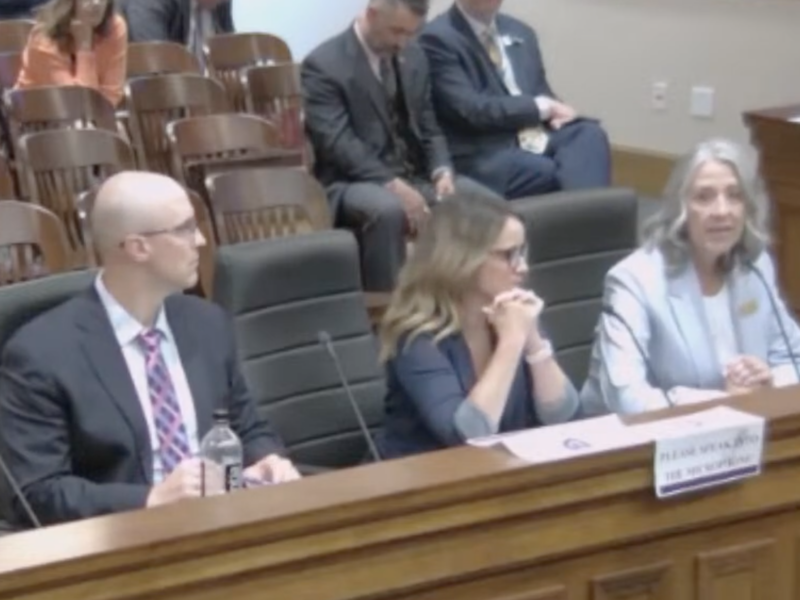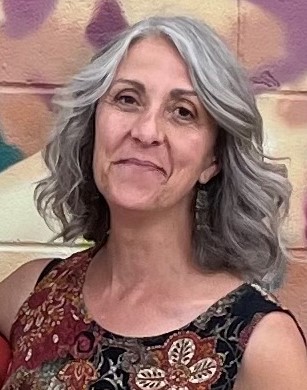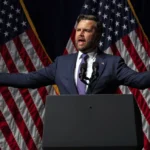FRIDAY FOCUS: Funding Stagnant for Wyoming’s Little Learners
Cheyenne educator prioritizes preschoolers for decades-long career
- Published In: Other News & Features
- Last Updated: Aug 11, 2023

Tricia Whynott, executive director of STRIDE Learning Center in Cheyenne, testifies before the Joint Education Committee Wednesday. (Screenshot via Wyoming Legislature YouTube)

By Carrie Haderlie
Special to the Wyoming Truth
For every dollar spent in a Wyoming kindergarten classroom, only .51 cents is spent in preschool — a notable gap highlighted in a new study by the Wyoming Special Education Financing Work Group.
Tricia Whynott, executive director of STRIDE Learning Center in Cheyenne, testified before the Joint Education Committee (JEC) on Wednesday about the challenges facing early childhood education in Wyoming, including a stagnant funding model that has not changed in over a decade.
“The legislators on the JEC are mostly very supportive and thinking of ways to support [Child Development Centers] across the state. I feel very hopeful that the near future will work out well,” Whynott said, following the meeting.
Thirty years ago, Whynott began her career as a special education preschool teacher and has served Wyoming’s youngest residents ever since. Today, she is a member of Gov. Mark Gordon’s Special Education Financing Work Group and also leads STRIDE, an early intervention and developmental preschool that serves 600 children from birth through age 5 with developmental disabilities or delays, plus additional typically developing children.
Children from Cheyenne to Burns, Albin and Pine Bluffs attend the school, which holds a contract with the Wyoming Department of Health, Behavioral Health Division, to provide services mandated by the federal Individuals with Disabilities Education Act (IDEA) to the state’s youngest residents.
The Wyoming Truth recently spoke to Whynott about the importance of early childhood education and the funding landscape in Wyoming. What follows are excerpts from the conversation.
How does Wyoming do things differently when it comes to early childhood education, for better or worse, than other states?
Whynott: [In the early 1970s]Wyoming decided to do something very Wyoming-like. They wanted to leave the services for children under 5 that were not yet in kindergarten, so age 3-, 4- and some 5-year-olds, to local control. Doing that is wonderful, because Wyoming is always about local control.
That being said, doing that limited things for families, children and communities, because there is no funding for any infrastructure, for any buildings, for transportation, for accountants or custodians or any of that.

Wyoming broke itself into 14 regions that are not based on county and are kind of eclectic. The state turned the responsibility [for early childhood education] over to the local regions, called Child Development Center regions, per a state contract. STRIDE has [filled that contract] in Laramie County for 50 years.
In the 1980s, it was written into state statute that these child development centers could serve children from birth until kindergarten. It has evolved, both in the educational arena and through state legislative work, to make sure that children were seen and addressed. Again, though, it came without any funding other than specialized money that was earmarked for 3-, 4- and 5-year-olds from the Wyoming Department of Education for children with special needs.
We receive very little federal funds. About 3% of STRIDE’s budget is federal funds. The Wyoming Department of Health gives us most of our funding. When Wyoming structured all of these private, regional CDCs, they housed the governance in the Wyoming Department of Health. They felt it was more health-related than educational. That is what makes it extremely different from other states, where 3-year-olds and up are thought of as educational.
In Wyoming we think of it both ways. For many, many years, we have talked about moving to the Department of Education. There are different camps of thought on that. It could move over, and remain exactly the same, but the governance piece would be under the Department of Education. That would make sense, because they are ultimately responsible for monitoring our services as contractors with the Department of Health. They make sure we are delivering free and appropriate public education to all Wyoming children 3 years old and up.
How has the funding landscape for early childhood education in Wyoming changed in your time?
Whynott: As generous as the state’s infant and toddler program is, it is not so for the 3-year-olds and up. We are still at the same per-child amount [about $8,600 per child per year] that has been written in statute for over 14 years. I was running my business on the same funding back in 2010 that I am running it on now. Part B preschool funding [the part of the federal IDEA that specifically addresses 3 to 5-year-olds] is stagnant. It is dead in the water. It doesn’t grow. That has made it so extremely impossible to sufficiently continue on.
What challenges have early childhood educators across Wyoming faced? Any potential solutions?
Whynott: The solution is pretty straightforward. There needs to be an increase in funding. Gov. Gordon’s Early Childhood State Advisory Council has put together an apples-to-apples comparison of what it costs to serve a 4-year-old [in preschool] and what it costs to serve a 9-year-old in a school district.
The report is finished. It is a budget session, so it’s hard to introduce any new legislation. But we are talking about it. We’re having these important conversations. We would like for the Legislature to consider this study, the relevance of it, and change the formula of how they come to our funding. . . . There is very little appetite right now to increase funds for very young children. The Legislature fully funded the Department of Education at $1 billion, so it is hard to say ‘Yes.’ They have funded so beautifully all those K-12th graders, but we have overlooked this little preschool population.
There is a problem. But we are Wyoming, and we can fix this. Within the next 12 to 18 months, we could develop a new formula for how to fund early intervention in Wyoming.
What are the benefits of access to a quality early childhood education?
Whynott: There was a study put out by the National Education Commission many years ago that found that for every dollar spent in early childhood education, a community saves $7 off adult services. More importantly at home in Wyoming, our reading scores are impacted by early childhood education. Third grade scores are a really important predictor of whether a child will be successful in school or not. They are based, a whole lot, on reading scores. We know that the children who are good, strong readers have had pre-K. . . .
The children who don’t have that experience sometimes struggle as readers by the time they get to third grade. It just makes sense: The more opportunity, the better. But data does prove that as well.
Some people don’t want to pay for universal preschool, and we have people who are not even sure if they do believe in preschool. There is debate out there about preschool, even though data shows the impact it can have. And we have wonderful Head Start programs that are a good thing for low-income families. But they are capped. Not all low-income families get into Head Start, as there are waiting lists. We also have some really sophisticated, nice preschool programs that most families can’t afford.
We have that middle class group that is hit or miss. That is tough, especially if you have working parents and the child already has to have daycare. This is a slow conversation because there are so many parts to it.
There is no legislation drafted this year for families to follow and support, but what families always can do is talk about their own experiences and what early intervention did for their child, without even asking for funding. We need to educate our leaders as to the importance of early intervention. Families can do that better than anyone.













